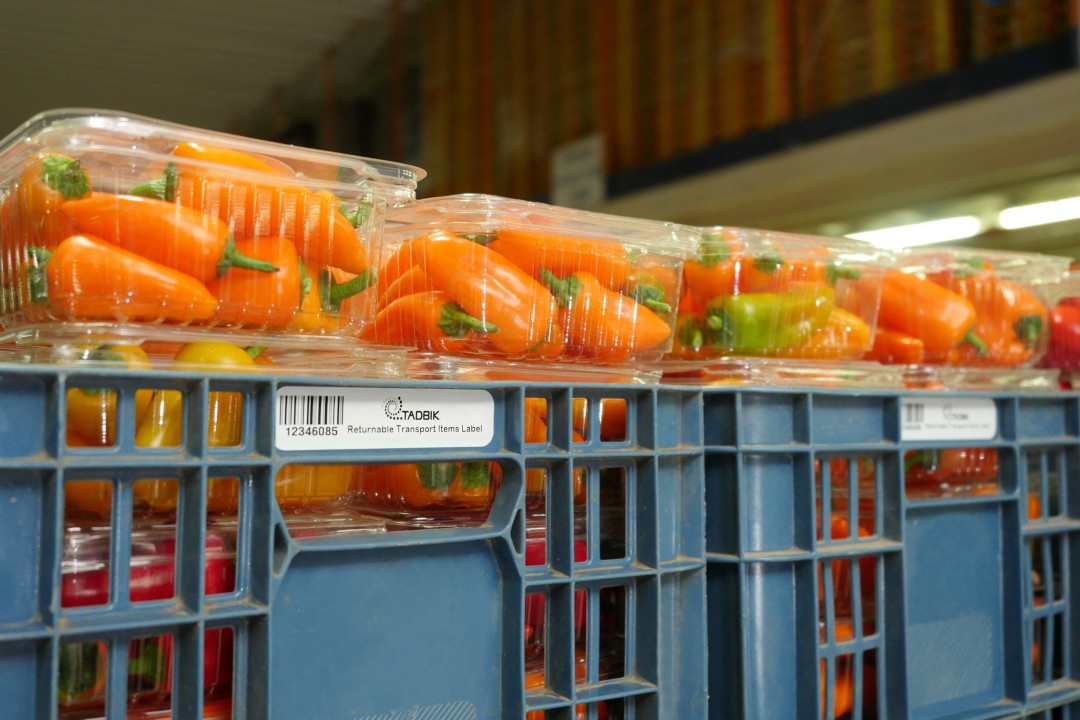Introduction
In today’s environmentally conscious landscape, companies are increasingly seeking sustainable solutions throughout their operation and supply chains. Returnable plastic containers (RPCs) or Returnable Transport Items (RTIs) are prime examples of how waste reduction and efficiency promotion can be achieved. These RPCs/RTIs include plastic-based crates, containers, pallets, trays, and more.
Transitioning to RFID (Radio Frequency Identification) technology can further enhance the sustainability and efficiency of RPCs/RTIs.
Examples of RPC/RTI Use in the Industry:
- Transporting Raw Materials and Finished Products: Used within facilities and throughout the supply chain.
- Shipping Goods from Distribution Centers to Retail Stores: Useful for movements inside the store and for reverse logistics to return unsold or defective items to suppliers.
- Transporting Perishable Goods: Ensures product freshness and minimizes waste for items like fruits, vegetables, dairy products, and beverages.
- Agricultural Uses: Efficiently transports crops, seeds, fertilizers, and agricultural equipment.
Maximizing Efficiency through RFID
To prevent losses and ensure process control, each item needs to be unique and quickly identified in mass volumes. Therefore, an effective UHF (Ultra High Frequency) RFID label is essential. The convergence of RFID labels with RPCs/RTIs heralds a new era of supply chain management efficiency. Here’s how RFID technology can optimize operations and bolster sustainability efforts:
- Improved Tracking and Visibility: Unlike traditional barcodes, RFID tags can be read wirelessly, even when the RPC/RTI is stacked or hidden within a pallet. This allows for faster and more efficient tracking from origin to destination.
- Reduced Loss and Theft: Unique RFID tags make it easier to identify and locate lost or stolen containers, significantly reducing shrinkage and improving inventory management.
- Automated Processes: RFID can integrate with warehouse management systems to automate processes like receiving, sorting, washing, and dispatching RPCs/RTIs, leading to increased efficiency and reduced labor costs.
- Compliance with Retail Mandates: Some major retailers mandate the use of RFID tags on RPCs/RTIs to improve their supply chain visibility and efficiency.
- Data Collection and Analysis: RFID systems generate a wealth of data that can be analyzed to optimize logistics and improve supply chain management. RFID tags can also store additional data, such as temperature or weight, aiding in quality control and ensuring proper transport conditions.
Choosing the Right Label
Designing the right RFID label involves considering several important factors:
- Label Base Material: Use durable film, typically polyester, for longevity.
- Adhesive: Select pressure-sensitive adhesive modified for low surface energy plastics (e.g., PP or PE polymers). The adhesive should resist solvents, cleaning agents, and temperature fluctuations.
- RFID Inlay: Test the RFID transmission behavior, considering the dielectric constant of the plastic which can influence antenna behavior. Choose the inlay with the best performance at the required frequency according to local regulations.
- Personalization: Ensure the encoding on a specific label matches the printed data exactly. Use durable printing methods and protect with varnish or lamination.
- Testing: Validate the label construction for harsh environments, including exposure to sunlight, outdoor conditions, multiple washes, and abrasions.
Investing in a Sustainable Future
Implementing a well-designed RFID labeling system for your RPCs/RTIs not only optimizes your supply chain but also supports a circular economy promoting environmental responsibility, Tadbik Advanced Technologies is a leading provider of innovative RFID labels for RPCs/RTIs. Contact us to discuss how we can help you optimize your RPC/RTI RFID labels or embedded tags, and contribute to a more sustainable tomorrow.
